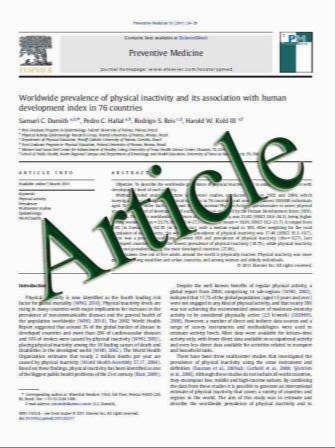A comparative study of myostatin, follistatin and decorin expression in muscle of different origin
- نوع فایل : کتاب
- زبان : انگلیسی
- مؤلف : Emi Hiroki , Shinichi Abe , Osamu Iwanuma, Koji Sakiyama , Nobuaki Yanagisawa , Kazunari Shiozaki , Yoshinobu Ide
- چاپ و سال / کشور: 2011
Description
Muscle regeneration supports muscle function in aging, and plays a role in the functional impairment caused by progressive neuromuscular diseases. Major substances controlling this process are growth factors and the extracellular matrix (ECM). Thus, follistatin is known to antagonize the function of several members of the TGF-b family of secreted signaling factors, including myostatin— the most powerful inhibitor of muscle growth characterized to date. Decorin—a small leucine-rich proteoglycan—traps myostatin and modulates its activity towards myogenic cells in the ECM. In addition, there are few reports concerning the regenerative muscle process of masseter muscles, which are of branchial arch origin, in mdx mice. Thus, in order to clarify the muscle regenerative process of masseter muscle, gene and protein expression of myostatin, follistatin and decorin were examined using the tibialis anterior (TA)muscle as a positive control. In both muscles, a gradual increase in mRNA myostatin, follistatin and decorin expression was detected, with the increase being greater in TA muscle than in masseter muscle. At 2 weeks, both muscles exhibited normal skeletal muscle cells. At 3 weeks, masseter muscle demonstrated scant areas of necrosis, whereas large necrotic zones were seen in TA muscle. At 4 weeks, the formation of necrotic tissue and presence of follistatin protein was observed clearly in masseter muscle. This result indicates that follistatin production is stimulated in the presence of necrosis. Interestingly, both muscles showed the same process of muscular formation, but with different time frames, which could be related to muscle origin.
Received: 2 November 2010 / Accepted: 9 February 2011 , Japanese Association of Anatomists 2011


